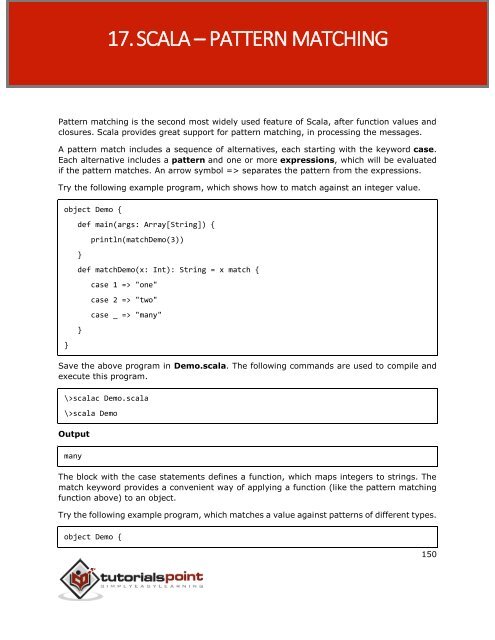Create successful ePaper yourself
Turn your PDF publications into a flip-book with our unique Google optimized e-Paper software.
17. SCALA – PATTERN MATCHING<br />
Scala<br />
Pattern matching is the second most widely used feature of Scala, after function values and<br />
closures. Scala provides great support for pattern matching, in processing the messages.<br />
A pattern match includes a sequence of alternatives, each starting with the keyword case.<br />
Each alternative includes a pattern and one or more expressions, which will be evaluated<br />
if the pattern matches. An arrow symbol => separates the pattern from the expressions.<br />
Try the following example program, which shows how to match against an integer value.<br />
object Demo {<br />
}<br />
def main(args: Array[String]) {<br />
}<br />
println(matchDemo(3))<br />
def matchDemo(x: Int): String = x match {<br />
}<br />
case 1 => "one"<br />
case 2 => "two"<br />
case _ => "many"<br />
Save the above program in Demo.<strong>scala</strong>. The following commands are used to compile and<br />
execute this program.<br />
\><strong>scala</strong>c Demo.<strong>scala</strong><br />
\><strong>scala</strong> Demo<br />
Output<br />
many<br />
The block with the case statements defines a function, which maps integers to strings. The<br />
match keyword provides a convenient way of applying a function (like the pattern matching<br />
function above) to an object.<br />
Try the following example program, which matches a value against patterns of different types.<br />
object Demo {<br />
150


